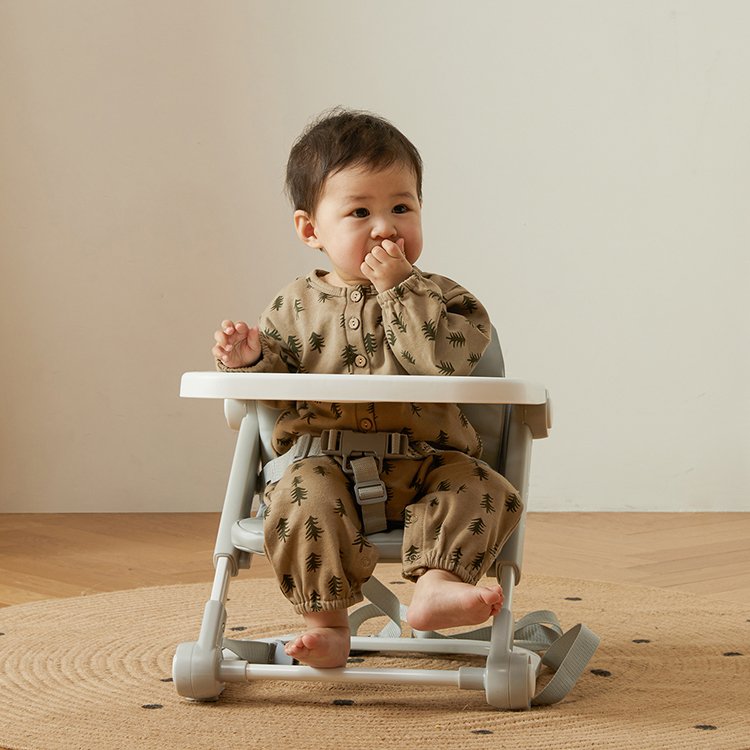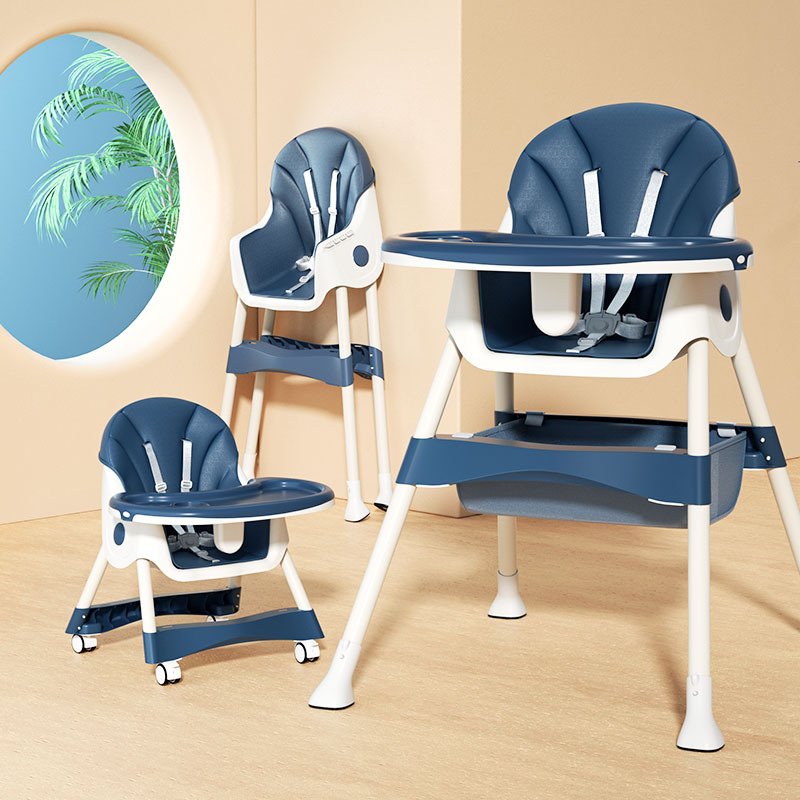Introduction: The Big Transition in Mealtime Milestones
One day, your baby is happily smearing mashed peas in a high chair, and the next, they’re insisting on sitting with the grown-ups at the dining table. That’s when every parent faces the same question: When is the right time to switch from a high chair to a booster seat?
Transitioning from a high chair to a booster seat marks a major developmental step—it signals growing independence and confidence. But timing is everything. Move too soon, and you risk mealtime chaos. Wait too long, and your little one might resist. Let’s explore how to make this switch smoothly and safely.
Table of Contents
- Introduction: The Big Transition in Mealtime Milestones
- Understanding the Difference Between High Chair and Booster Seat
- Signs Your Child Is Ready to Move On
- Ideal Age to Transition from High Chair to Booster Seat
- Types of Booster Seats for Toddlers
- Safety Tips When Using a Booster Seat
- Step-by-Step Guide to Making the Switch
- Common Mistakes Parents Make During the Transition
- Benefits of Switching to a Booster Seat
- When to Delay the Transition
- How to Choose the Right Booster Seat
- Transitioning Tips for Smooth Mealtimes
- Final Thoughts: A Natural Step in Growing Up
- FAQs
- Share This Case:
Understanding the Difference Between High Chair and Booster Seat
What Is a High Chair?
A high chair is designed for babies and younger toddlers who need full support during mealtime. It usually features a secure harness, a built-in tray, and a tall frame to elevate your child to table height. It’s perfect for the early stages of self-feeding.
What Is a Booster Seat?
A booster seat is a smaller, portable seat that attaches to a regular dining chair, helping toddlers sit safely at the family table. Unlike high chairs, booster seats don’t have bulky frames or trays. They’re intended for children who can sit independently and eat with minimal assistance.
Key Differences Between the Two
- Support: High chairs provide more stability for younger babies; booster seats rely on your child’s own balance.
- Size: Boosters are compact and portable.
- Use: High chairs are standalone, while booster seats integrate your child into family mealtime.
Signs Your Child Is Ready to Move On
1. Your Child Can Sit Up Unassisted
If your little one can sit steadily without slumping or tipping over, that’s the first sign they might be ready to transition.
2. They’re Starting to Resist the High Chair
Does your child fuss or try to climb out of their high chair? That’s often their way of saying, “I’m ready for a big-kid seat!”
3. Your Little One Wants to Eat at the Table
When your toddler starts reaching for your plate or insisting on joining family meals, it’s a clear cue that they crave more inclusion.
4. Safety and Size Fit Considerations
If your child’s legs no longer fit comfortably under the tray or they’re able to unbuckle themselves, it’s time to move on for safety reasons.
5. They’ve Outgrown the High Chair Weight Limit
Check the manufacturer’s recommended weight limit—many high chairs cap around 35–40 pounds. Once your child nears that limit, transition to a booster.
Ideal Age to Transition from High Chair to Booster Seat
The Typical Age Range (12–36 Months)
Most kids make the switch between 18 months and 3 years old. However, readiness depends more on ability than age.
Every Child Develops Differently
Some children may transition earlier if they’re stable and coordinated; others may need more time to feel secure. There’s no one-size-fits-all answer—follow your child’s cues.
Types of Booster Seats for Toddlers
Table Booster Seats
These attach directly to dining chairs and bring your child up to the table. Great for small spaces and everyday use.

Easy Installation Baby Sitting Chair for Table Hook-on
Portable Kids Table Side Eating Dining Feeding Baby Sitting Chair
Features
- Dining chair: Having baby sit at the table is important for family harmony.
- Portable & easy to use: It’s portable & collapsible, so you can use it at home, while traveling, or at restaurants.
- Comfortable: With our table chair, it’s easier for parents and babies to go out, eat, and participate in social life.
- Safety: This table chair includes a three-point harness.
- Convenient: The functional design includes a handy rear pocket.
Floor Booster Seats
Perfect for younger toddlers still practicing balance. They sit directly on the floor and are excellent for snack time or play.

Portable Foldable Booster Chair for Baby
High Chair for Toddlers Folding Portable Booster Seat Babies/Kids Feeding Chair for Dining Table
Features
- Stable and Comfortable
- Fold and Take it Anywhere
- 4 Adjustable Heights
- Easy Clean
- Easy to Install and Take Down
Convertible Booster Seats
These grow with your child—starting as a high chair and later converting into a booster seat. Ideal for long-term use.

High Chair for Toddler
Light Weight Portable Baby High Chair for Both Infants and Toddlers
Features
- Stable & Safe Structure
- Adjustable Settings
- Comfortable Seating
- Removable Tray
- Foldable & Portable Options
- Modern Aesthetic
Safety Tips When Using a Booster Seat
Always Use Safety Straps
Even if your child seems steady, accidents happen fast. Always buckle them in securely using the seat’s harness or straps.
Choose a Stable Dining Chair
Avoid lightweight, folding, or unstable chairs. A sturdy, four-legged dining chair is best for attaching a booster seat.
Never Leave Your Child Unattended
It’s tempting to step away “just for a second,” but toddlers can wiggle free in moments. Always stay nearby during mealtime.
Step-by-Step Guide to Making the Switch
Step 1: Introduce the Booster Seat Gradually
Start by showing the seat to your child and letting them explore it before mealtime. This builds comfort and curiosity.
Step 2: Make It Fun and Engaging
Use stickers, colorful placemats, or a favorite bib to make sitting in the booster exciting rather than scary.
Step 3: Start with Short Mealtime Sessions
Try the booster for breakfast or snacks before moving to longer meals like dinner. Shorter sessions ease the transition.
Step 4: Keep Mealtimes Consistent
Routine helps children adapt. Eat together at the same spot daily so they associate the booster with family time.
Common Mistakes Parents Make During the Transition
Switching Too Early
Moving your child before they have enough balance can cause frustration and even safety issues.
Ignoring Safety Features
Skipping the harness or using an unsecured chair increases risk. Always double-check installation.
Choosing the Wrong Chair Type
Not every booster fits every chair. Ensure the straps are long enough and the seat base is stable.
Benefits of Switching to a Booster Seat
Encourages Independence
Your child learns to feed themselves and sit with the family—huge steps toward confidence and self-sufficiency.
Makes Family Meals Easier
No more bulky high chair taking up space. Your child can now sit at the same table, creating a true family mealtime experience.
Easier to Travel With
Booster seats are lightweight and portable, perfect for restaurants, trips, or visiting grandparents.
When to Delay the Transition
- If Your Child Still Needs Extra Support
If your child leans or slouches frequently, their core strength may not yet be ready for a booster.
- If They’re Unsteady or Fidgety at Mealtime
Kids who can’t sit still or frequently slide out of the seat may need more time before transitioning.
How to Choose the Right Booster Seat
Consider Your Table Height
Not every booster aligns well with every table. Check that your child can reach comfortably without stretching.
Prioritize Safety and Comfort
Look for non-slip bases, adjustable straps, and soft, wipe-clean materials.
Check for Portability and Ease of Cleaning
Spills happen. Removable covers and dishwasher-safe trays save time and stress.
Transitioning Tips for Smooth Mealtimes
Let Them Choose Their Seat
Give your child a sense of control—let them pick the color or help “set up” their new seat.
Praise and Encourage Independence
Positive reinforcement works wonders. Celebrate small successes like sitting still or eating neatly.
Stay Consistent with Rules
If your child leaves the table or plays with food, handle it calmly but consistently. Boundaries help routines stick.
Final Thoughts: A Natural Step in Growing Up
Transitioning from a high chair to a booster seat is a small change that marks a big milestone. It’s not just about furniture—it’s about growing independence, inclusion, and family bonding. Trust your instincts, prioritize safety, and remember: every child moves at their own pace. Before long, your toddler will be sitting proudly at the table, ready for whatever’s next.
FAQs
1. What age is too early for a booster seat?
Anything before 12 months is usually too early. Wait until your child can sit up straight and control their body movements.
2. Can I use a booster seat without a dining table?
Yes! Floor booster seats or portable models are perfect for casual mealtimes or outdoor use.
3. How do I clean a booster seat properly?
Use warm soapy water or disinfectant wipes for plastic parts and machine wash removable covers if applicable.
4. Should I use a backless or high-back booster seat?
Start with a high-back booster for better support, then move to a backless one once your child is stable and confident.
5. What’s the safest booster seat option for travel?
Choose a lightweight, foldable model with non-slip grips and secure straps—it keeps mealtime safe and hassle-free anywhere.



